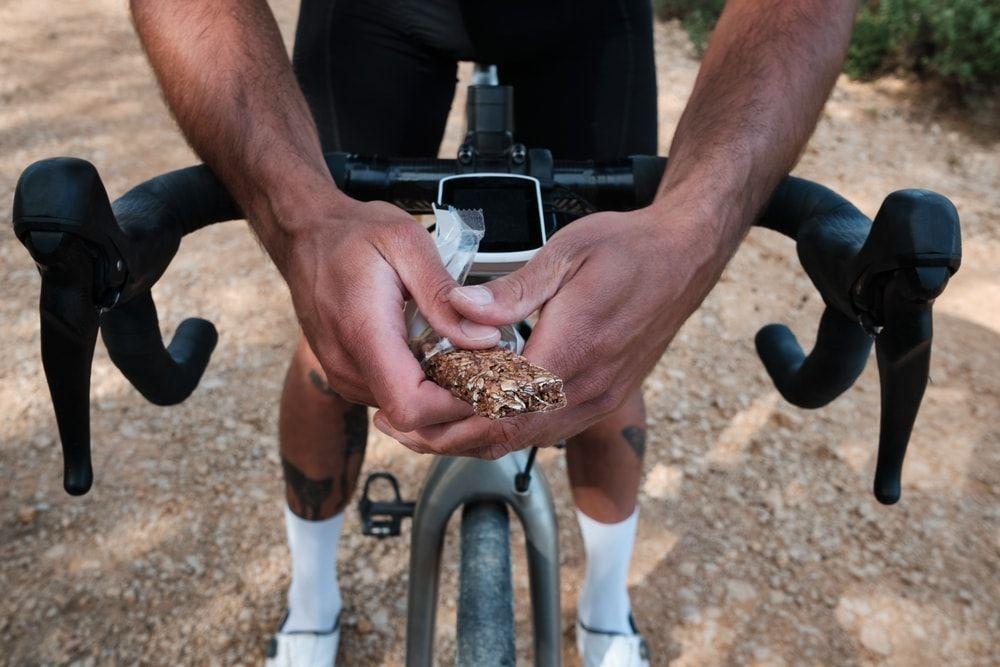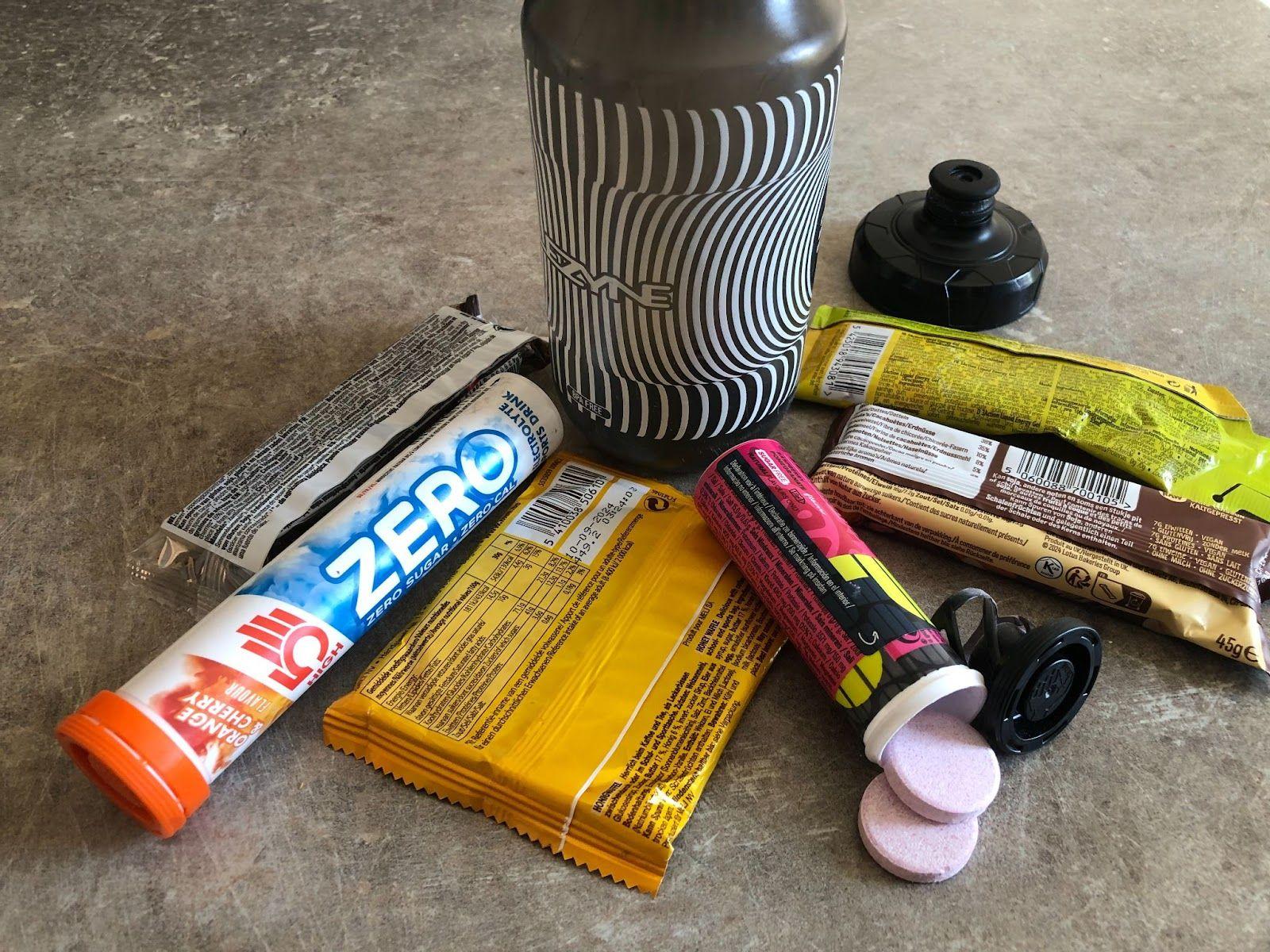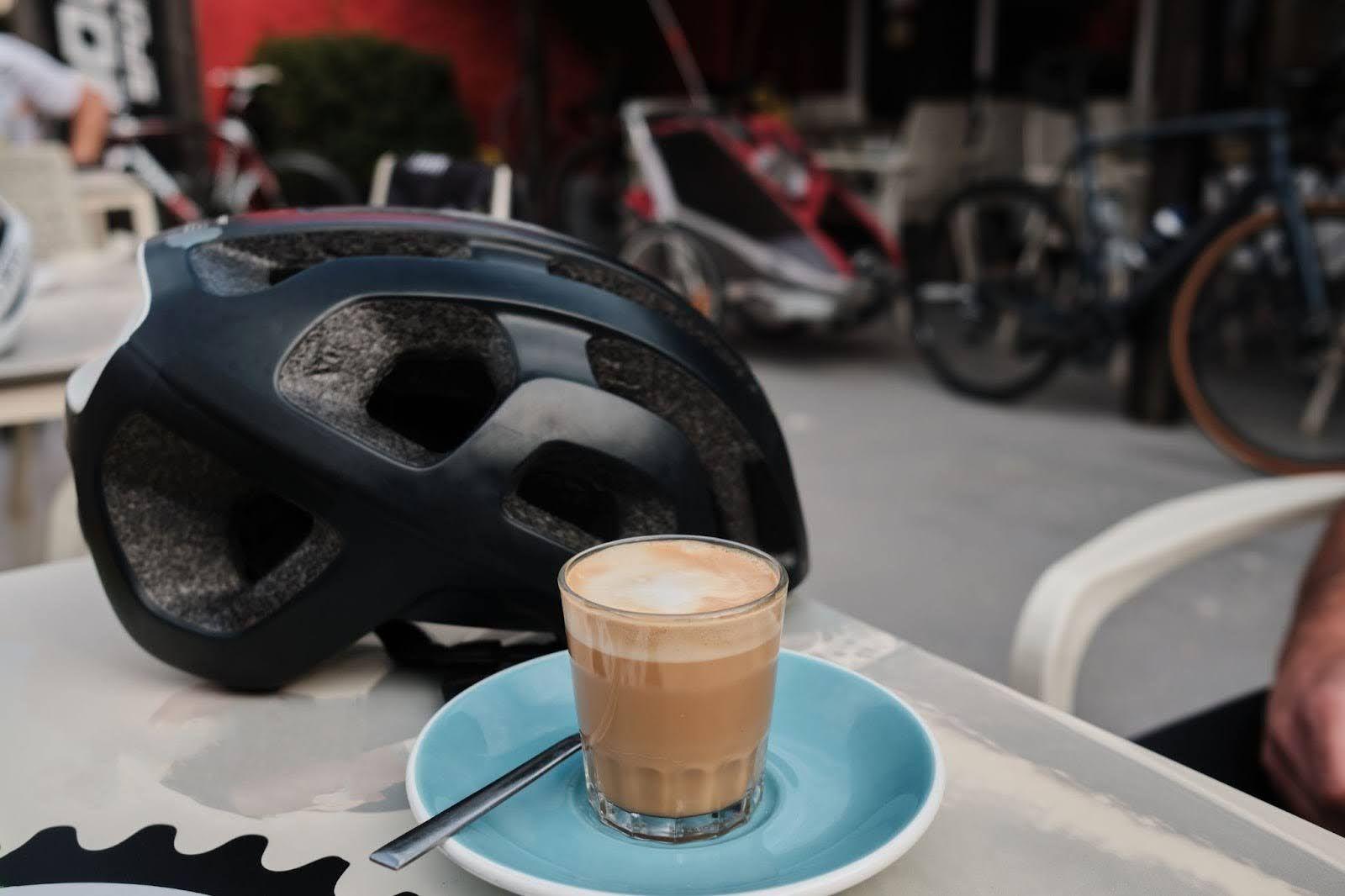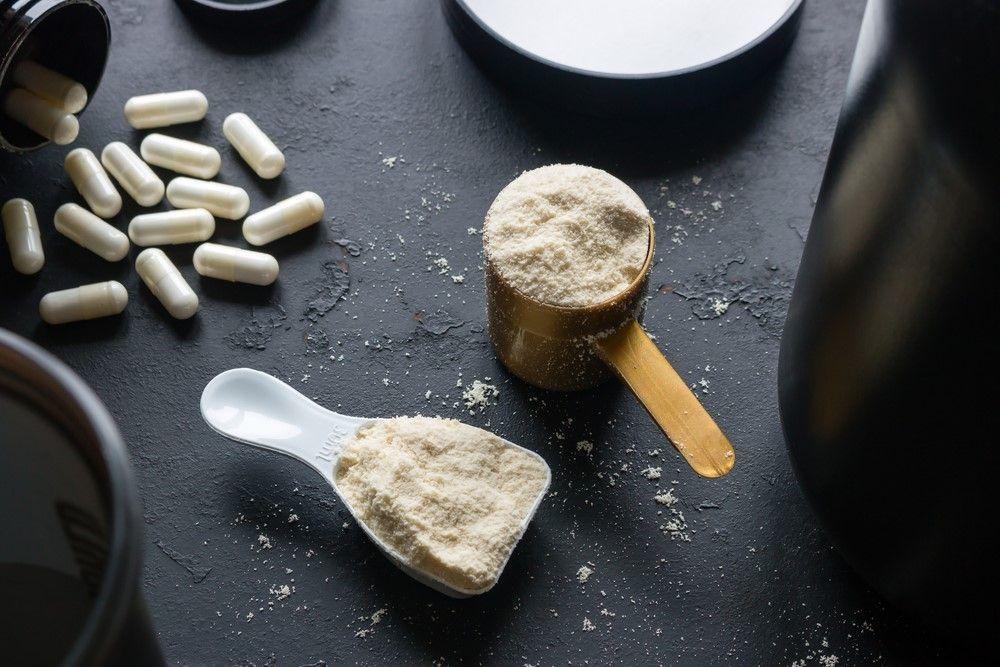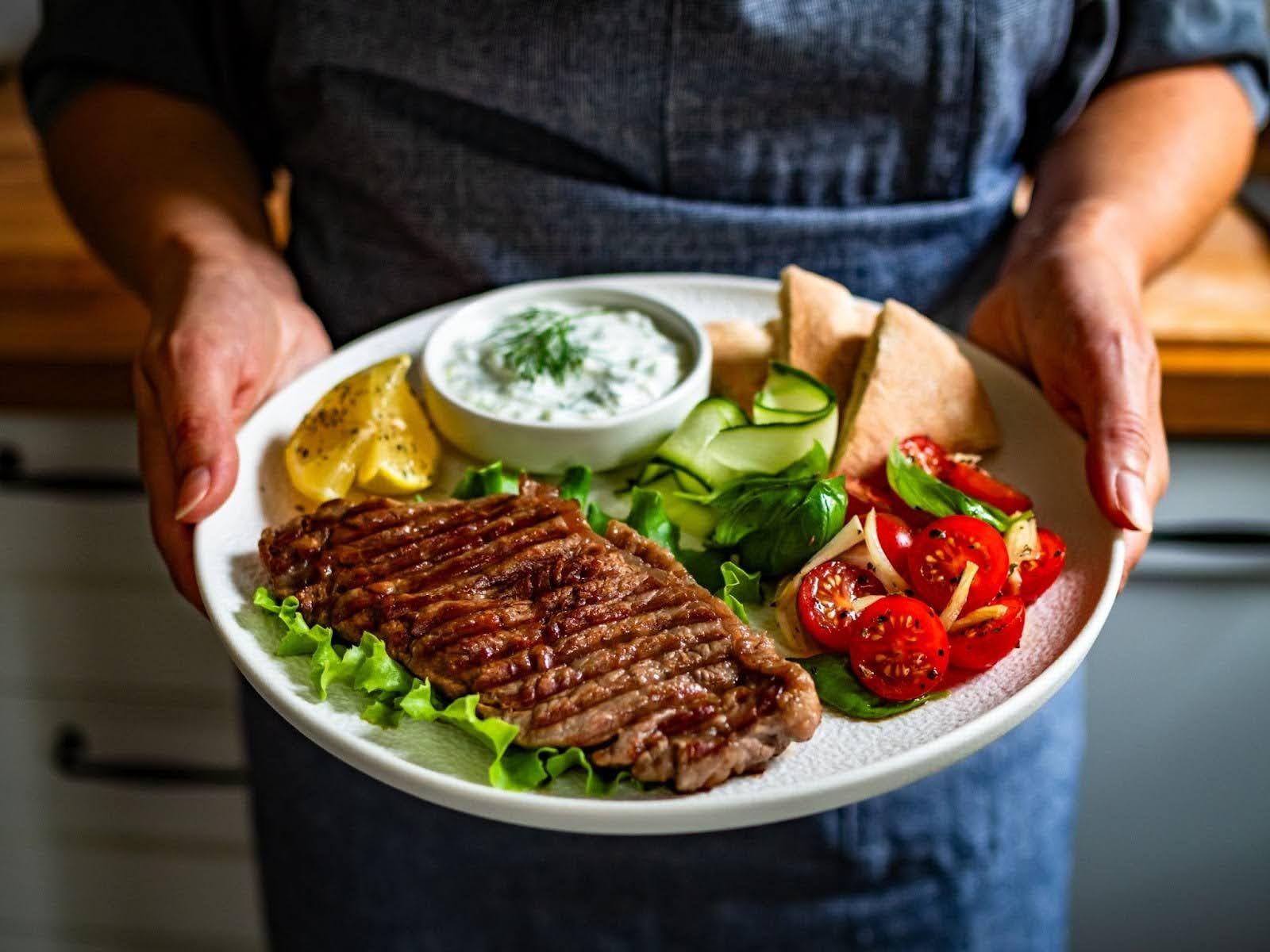In general, we can divide the whole topic into 3 circles: What you eat, how much you eat and when you eat. Let’s take a look at what our cycling nutrition advice is.
Hydration above everything
Indoor training has some specifics - the duration of each session is usually relatively short (mostly between 60 to 90 minutes) and obviously you ride indoors. What does this mean for your nutrition and hydration? Even with the best fan in the world, you will be sweating way more during your indoor training sessions. So, you absolutely need to stick to the motto ‘Hydrate or die‘.
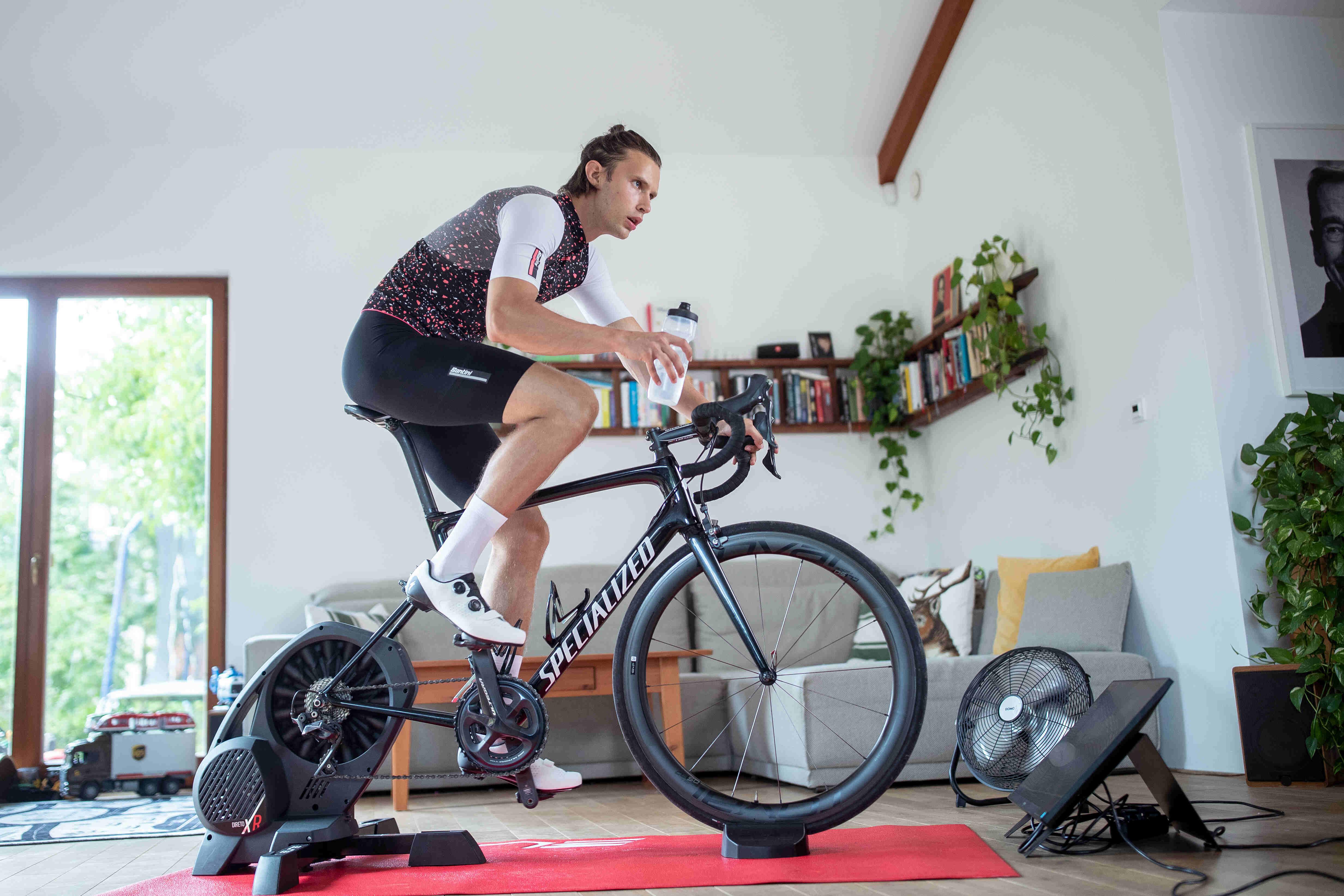
A simple way to measure your fluid intake is to measure your naked body weight before and after a hard and short ROUVY workout. One kilogramme is roughly the equivalent of one litre, so if you lose 500 grams over an hour's effort, the volume of liquid consumed during the session should be around half a litre, at least.
Electrolytes: Yes or no?
Speaking of hydration, it’s a good idea to understand the usage of electrolytes in your hydration as they have become the go-to and often debated supplement in recent years.
If your indoor session isn’t longer than 45 minutes, then the usefulness of electrolytes is debatable. If the exercise is relatively short, electrolytes have little or no effect. In fact, we lose them in sweat, but that doesn’t mean we need to replace them immediately during exercise. How many hours a week do you spend on your indoor trainer? That's the key thing to consider. If it is less than 10 hours, it’s probably not enough for you to develop an ‘electrolyte deficiency’.
What to eat before the ride?
Again, considering that the indoor sessions are short and sharp, there are two main concerns regarding pre-training preparation - having enough energy and ensuring that you allow enough time after your last full meal in order to digest before your session starts.
In practical terms, that means you need to start your session 2-3 hours after your lunch/dinner. If you’re going to ride, let’s say, in the early evening and your last big meal was lunch, you will need a small snack 1 - 2 hours in advance. A banana or energy bar is just enough; if you happen to eat just before the ride, a dedicated nutrition gel for cycling will do the trick too.
Remember that we are talking here about indoor sessions that are no longer than 90 minutes. Nutrition for longer rides differs!
Calories knowhow
It’s really simple: the amount of calories you burn should equal the amount of calories you consume. The only scenario when you can 'consume less than you can lose’ is when you want to reduce your body weight. In that case, be sure to limit the deficit to 250 calories a day, if you want to continue riding hard!
There are different ways to estimate your calorie needs. You can use the data from your smartwatch or the mobile training app or even better, the ROUVY app as it tells you the amount burned after every ride.
Even if you ride outdoors and don’t use hardware that can calculate your calories consumption, you can still use a simple formula to calculate your burned calories: calories burnt = ridden kms x 70. Therefore, on a 30 km ride, you can estimate your calories burned as 2100.
Carbohydrates
Carbohydrates should be the mainstay of your diet; they are the main ‘food’ for the muscles and central nervous system. It is necessary to consume them in the hours or days prior to the session, during the exercise, and of course, to refuel during recovery.
Fruits, grains, legumes, vegetables, sugary sweets and dairy products are all examples of carbohydrates that you need to include in your diet to perform well. Does the list seem incomplete to you? You are right, there is pasta missing! No full-day ride in the Dolomites is complete without a good serving of a great pasta dish. It’s for a good reason and now, you know why!
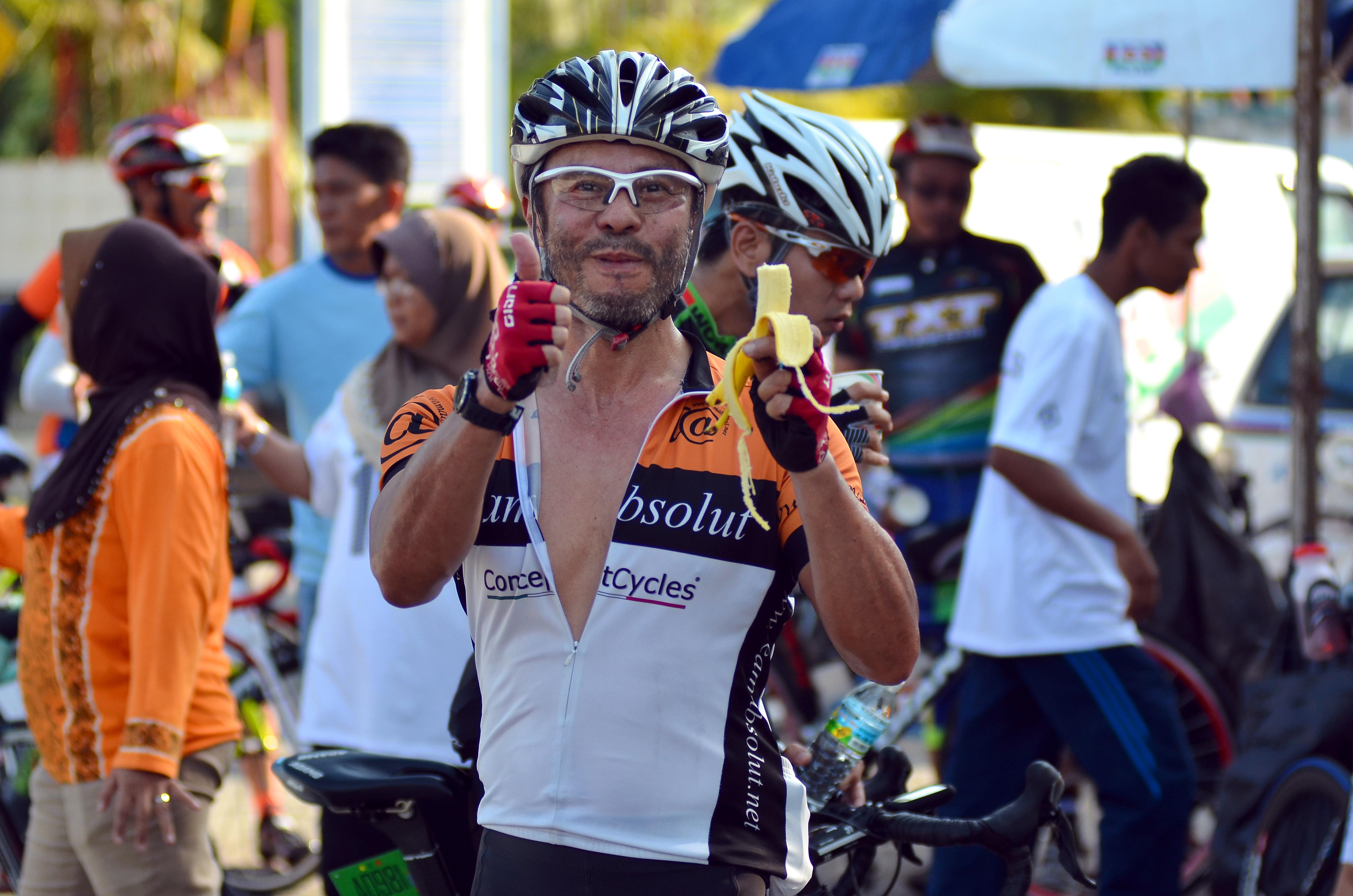
For sessions longer than 90 minutes, you should also be consuming carbs during the workout. You can start with 50 grams of carbohydrates per hour and build up to 70g/hr. In practical terms, that means 2-3 bananas or 4 slices of white toast or 1 Bounty bar.
One great advantage of riding on ROUVY is easy access to drinks and nutrition; nothing prevents you from sticking to a plan you set beforehand.
Time to recover
After the ride, the main priority is replacing lost fluids. Cycling post-workout nutrition in our case could be 20g of quality protein, ideally in the form of powder, as this will help you with post-training re-hydration. Great recovery combined with good post-workout nutrition have a strong impact on your body, so don't underestimate both of them if you want to ride again the next.
Trust your body
Remember that numbers may sound exact but your feelings still have a big role! Measuring the burned calories is very hard unless you lie in your bed all day long. So don't forget to use your common sense and if you feel hungry every evening, try to eat more. If you haven’t been hungry in days, try to eat a little less.
Your feelings are feedback to your body, so pay attention to them! Also, if you are really serious about your results, consider having a cycling nutrition coach that will help you to set up your diet.
In conclusion
Every cyclist is different and has a different metabolism. So these steps are intended as a guide but it's important to find the system that works for you. So some trial and error will be required before you fully understand your own body's nutritional needs.
Being aware of your body's requirements and limits is the first step towards a better and more rewarding indoor cycling experience. Creating an effective routine may take a little time but you will soon see the longterm benefits, especially if you stay active throughout the year. We recommend a 1 year subscription with ROUVY to save you money and give you the longterm planning needed for an effective annual routine, no matter how the weather is outside.

